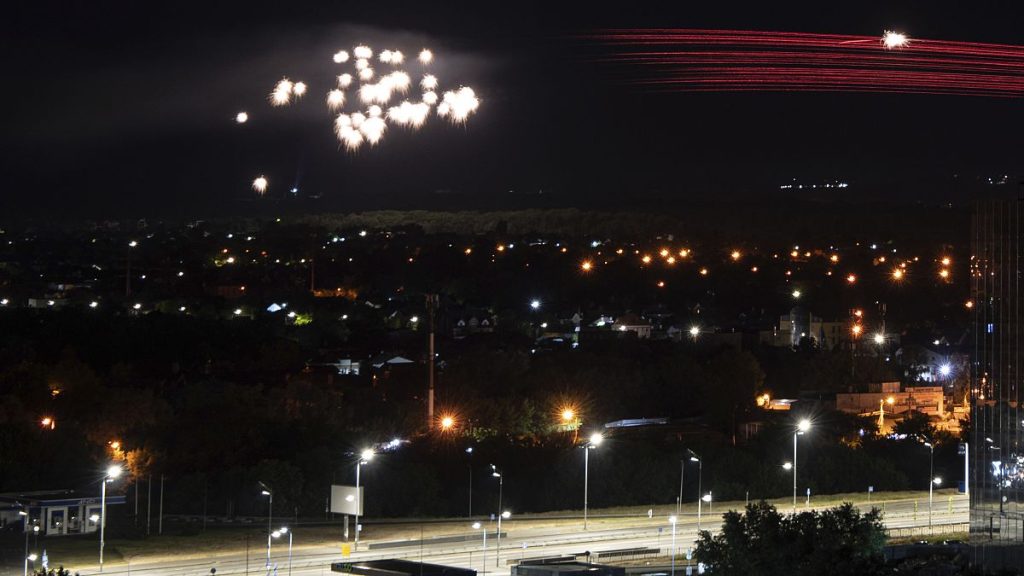In response to Russia’s escalating use of Shahed drones for mass attacks, Ukraine has developed innovative countermeasures aimed at neutralizing these threats. Recent military operations have seen Russian forces deploy significant numbers of Shahed drones, with an attack on a Sunday night involving 110 drones, of which Ukrainian air defense managed to shoot down 52. However, 50 drones did not reach their targets, leading analysts to speculate about their fate. Experts suggest that Ukraine successfully employs spoofing techniques, providing false GPS data that misdirects the drones back towards Russia or into Belarus, clearly showcasing the advancements in Ukraine’s electronic warfare (EW) capabilities. John Hardie, a prominent defense analyst, explains that these tactics exploit vulnerabilities in the drones’ navigation systems, effectively tricking them into veering off course rather than being directly shot down, leading to a rising number of drones labeled as lost.
The evolution of Ukraine’s electronic warfare strategies has become increasingly apparent, especially when evaluating the effectiveness of their recently implemented defense systems. The Ukrainian military’s Pokrova system, or “veil of protection,” is emblematic, having been developed as a high-tech solution to counter drone threats. Since its commencement, the effectiveness of this system has notably improved, as evidenced by a twofold increase in the number of drones reported as lost due to EW interference. This increase reflects not only the sophistication of Ukrainian EW capabilities but also a concerted effort to neutralize the threat posed by Russian UAVs. Additionally, Ukraine has utilized mobile anti-Shahed units equipped with artillery and advanced sensors to intercept drones efficiently, further complicating the operational landscape for Russian attacks.
Interestingly, Ukraine’s EW measures are not solely focused on neutralization; they have enabled the redirection of Russian drones back into Belarusian airspace. Data from the Hajun Project indicates a systematic increase in such incidents since July, reaching an unprecedented number of incursions in November. The progressive escalation of drones entering Belarus suggests a lack of preparedness by the Belarusian government to handle these errant UAVs, pointing to potential communication failures between the two countries. While Russian operators may not have anticipated the extent to which Ukrainian interference could impact their drone deployments, it has left Belarus scrambling to manage violations of its airspace.
The response from Belarus has revealed an alarming gap in preparedness, with military jets often scrambled to deal with incursions. Publicly available information about these incidents is limited due to censorship and repression in Belarus, where authorities have sought to minimize reporting on the drone incidents. The Hajun Project has highlighted specific cases, like a drone crash in Kalinkavichy, illustrating how efforts to suppress public knowledge regarding these occurrences have further complicated the situation. This attempt at information control showcases a broader strategy of Belarusian authorities to maintain a facade of normalcy amidst the chaotic reality that has emerged from Ukrainian counteroffensive tactics.
The strategy of redirecting drones to Belarus rather than back to Russia raises fundamental questions about operational methods. Hardie’s insights reveal that successful spoofing does not entail a direct reversal of the drone’s flight path. Instead, Ukraine gradually alters the course, causing drones to inadvertently navigate towards Belarus—a tactical decision grounded in operational discretion. The journey of a drone aimed at Ukrainian targets that instead finds its way towards a country allied with Russia reflects the complexities of modern warfare, where the lines of communication and coordination can break down under pressure.
Additionally, the evolving landscape of drone warfare has also seen implications on civilian technology, particularly in Ukraine. Recent warnings issued by the Ukrainian Armed Forces indicate that the electronic warfare operations, while targeting military threats, may inadvertently disrupt civilian technology like smartphones. Instances of civilians observing erroneous geolocation data from devices have highlighted the broader impacts of warfare on ordinary life. This phenomenon points to an ongoing challenge faced by Ukraine as it maneuvers through a landscape of sophisticated combat technology, illustrating the dual-edged sword of technological advancement in warfare—where tools designed for defense may have unintended consequences on civilian life. As the struggle continues, both Ukraine and Russia are compelled to adapt rapidly, revealing the dynamic nature of conflict in the modern era.

